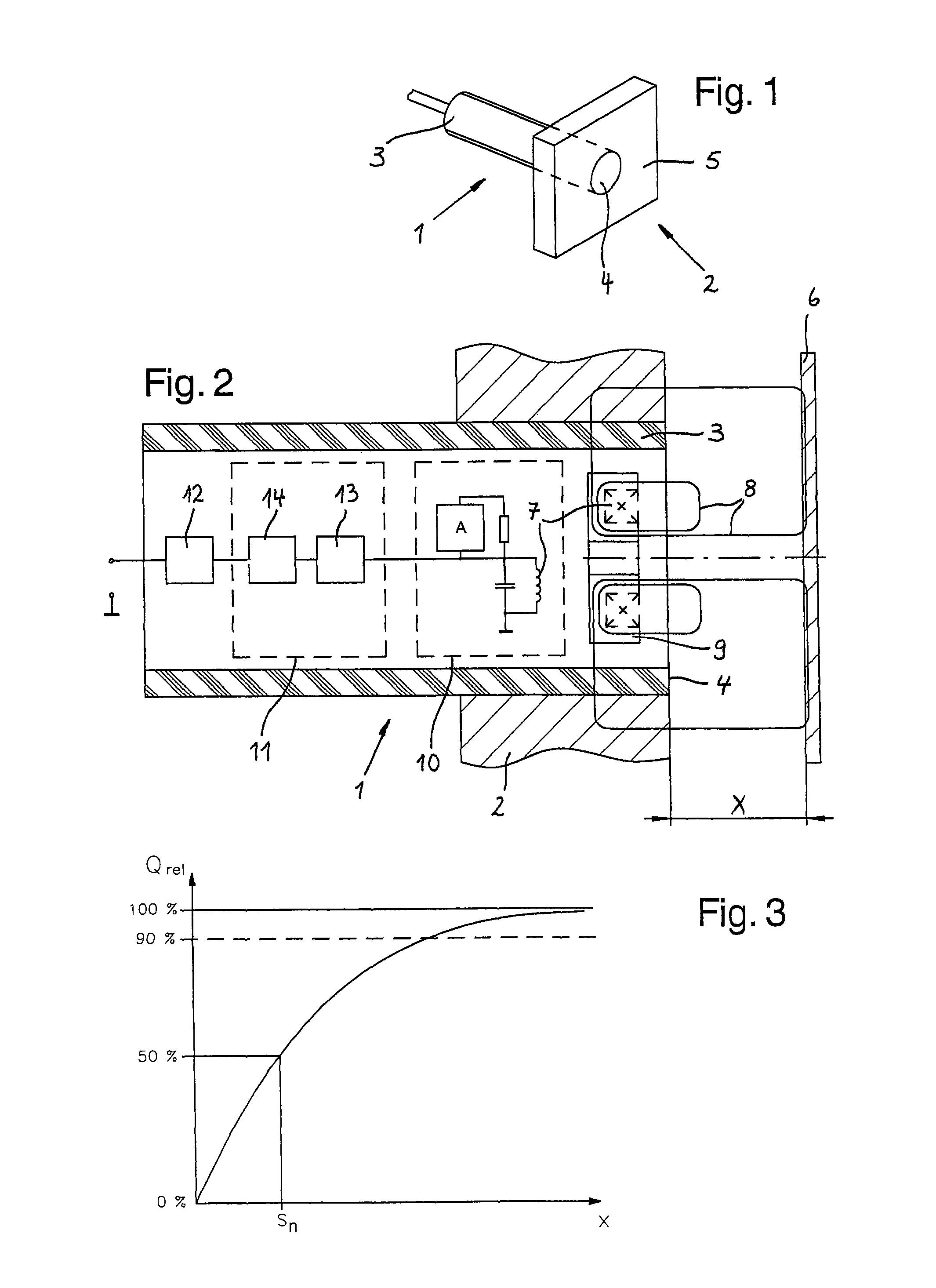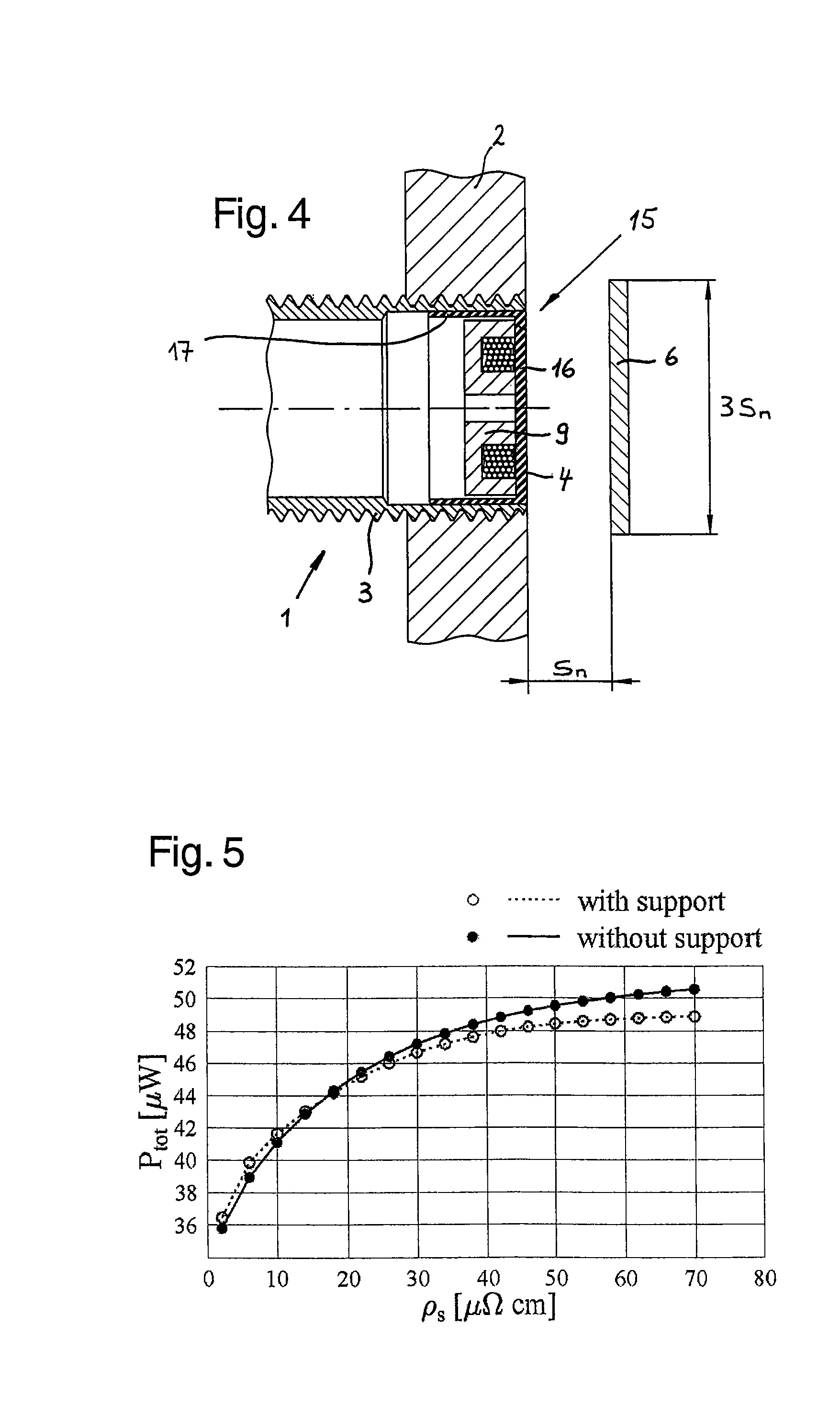Inductive proximity sensor for embedded mounting and method of design
a technology mounting plate, which is applied in the field of inductive proximity sensor, can solve the problems of increasing the impact of eddy current loss in the mounting plate on the total amount of eddy current loss, attenuating the oscillator, and ordinary long range sensors not fully embeddable in steel mounting plates, so as to improve the embeddability of proximity sensors without adversely affecting their sensor rang
- Summary
- Abstract
- Description
- Claims
- Application Information
AI Technical Summary
Benefits of technology
Problems solved by technology
Method used
Image
Examples
Embodiment Construction
[0034]FIG. 1 shows an inductive proximity sensor 1 mounted in a mounting plate 2. The enclosure of the sensor substantially consists of a cylindrical sleeve 3 made of non-ferromagnetic metal, which is threaded on its outside and screwed into a correspondingly threaded through-bore of the mounting plate 2, so that a sensing face 4 of the enclosure, which is perpendicular to the sleeve axis, is flush with a front surface 5 of the mounting plate 2. The term flush mounted is used as a synonym for embedded hereinafter and implies that the bore through the mounting plate is not enlarged near the front surface 5 of the mounting plate, so that no space is provided around a front portion of the sensor 1.
[0035]FIG. 2 is a schematic representation of an arrangement comprising an inductive proximity switch 1 mounted in a mounting plate 2 according to FIG. 1 and a target plate 6 arranged in front of its sensing face 4. The sensor has an electrical circuit and a magnetic circuit, which are repres...
PUM
 Login to View More
Login to View More Abstract
Description
Claims
Application Information
 Login to View More
Login to View More - R&D
- Intellectual Property
- Life Sciences
- Materials
- Tech Scout
- Unparalleled Data Quality
- Higher Quality Content
- 60% Fewer Hallucinations
Browse by: Latest US Patents, China's latest patents, Technical Efficacy Thesaurus, Application Domain, Technology Topic, Popular Technical Reports.
© 2025 PatSnap. All rights reserved.Legal|Privacy policy|Modern Slavery Act Transparency Statement|Sitemap|About US| Contact US: help@patsnap.com



